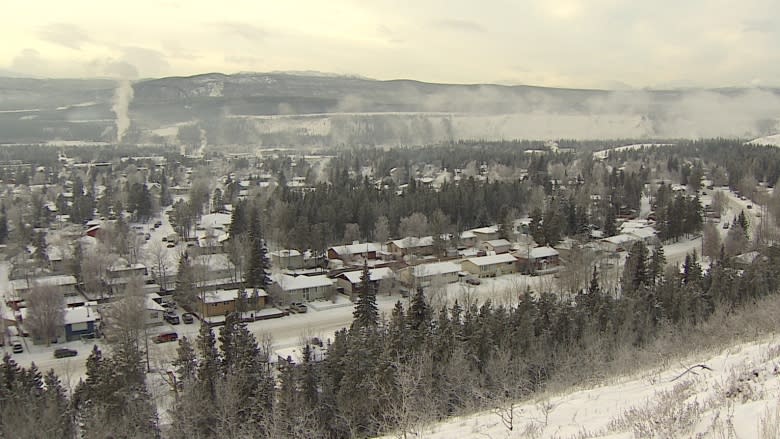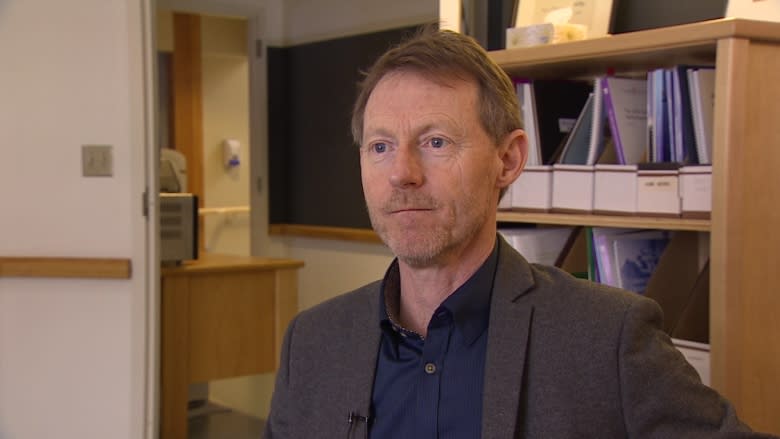Wood smoke 'a real concern' for air quality in Whitehorse, study suggests
A study on air quality in Whitehorse has found that some parts of the city have poorer air quality than others, largely because of smoke from wood stoves.
"The areas that are shown to be more affected are the areas that hold the pollution more in the wintertime," said Janine Kostelnik, an environmental protection analyst with the territorial government.
"And those are the areas in a bowl, or with a hill beside them, that trap pollutants in because of cold weather inversions."
Winter inversions trap cold air beneath a layer of warmer air that acts like a lid. The trapped air can hold pollutants that can affect human health.
The government installed air quality monitors at nine locations around the city two years ago, and then collected 18 months' worth of data from those monitors.
Whitehorse is often celebrated for its relatively clean air, but the data suggest that some areas of the city have better air than others.
Air quality tended to be poorest in four areas — around the Kopper King, Hidden Valley, the Takhini Trailer Park, and Riverdale — especially in the winter months when people are heating their homes with wood.
"I think it's enough data to say that this is a real concern," says Brendan Hanley, Yukon's chief medical officer of health.
Smoke 'more than just a nuisance'
Hanley, who also contributed to the research study, said the data is not surprising. He said it's common to see a smoky haze hanging over some parts of the city on cold winter days.
"Really, what this data does is it validates what we already know, or what people have observed," Hanley said.
"What I think this tells us, is that the smoke is more than just a nuisance — it can be enough that it does pose health risks, especially in those neighbourhoods that were identified in the study."
Hanley said smoke can be particularly harmful to people with respiratory problems, but it's also an irritant that can affect anyone.
"That can be a cough, it can be nausea, it can be runny nose, sore eyes, sore throat — like we see also with wildfire smoke in the summer," he said.
"There's even data which shows, for instance, an increased risk of heart attacks associated with air pollution. So we have to be cognizant of those risks for those who are more susceptible."
Plans to monitor air in Dawson City
The government plans to continue the research, collecting more air quality measurements around Whitehorse, and also installing a monitor in Dawson City.
"Just to try and get a baseline idea of what the air quality is like in Dawson City," Kostelnik said. "There has been no air quality monitoring up there, ever, that I'm aware of."
One of the Whitehorse monitors will also be used as a portable tool — for things like setting up in an area near a wildfire, to measure pollution and particulate matter in the air.
Researchers are also planning a public campaign later this summer, to talk to Yukoners about how they use their wood stoves and fireplaces.
"We want to try to engage with people to see what's going on, to reduce the smoke that's coming out of the chimney, so that improves the overall air quality in the area," Kostelnik said.
"We're not going to be telling them that they can't burn, but we're going to be educating them on how they can burn better, and more efficient."
Hanley also wants to dig deeper into what the real health impacts are from wood smoke and other air pollutants in the Yukon.
"For example, if we can match health visits to ... neighbourhoods. That might be one way we could determine are there any trends," he said.
Hanley said the goal is to ensure that Yukoners are breathing the cleanest air possible, and helping people understand how they can help.
"We know this has been a smouldering issue, so to speak, for many years," he said.




